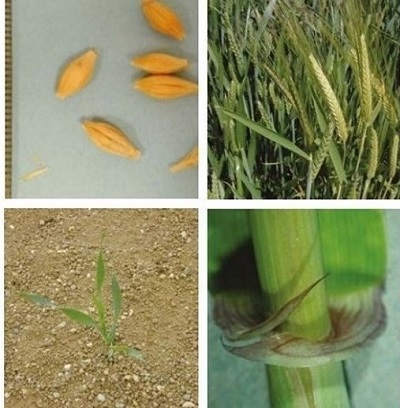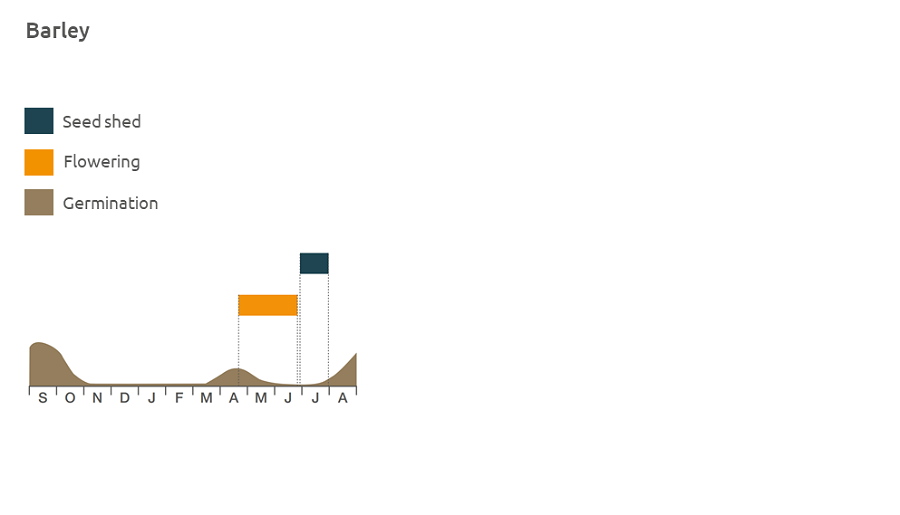- Home
- Knowledge library
- Distribution and biology of volunteer barley weeds in the UK
Distribution and biology of volunteer barley weeds in the UK
Barley volunteers from the previous crop can be a grass weed if soil conditions are favourable. Find out how to identify and control it.
Overview
Barley (Hordeum vulgare) volunteers from the previous crop can germinate after harvest if soil conditions are favourable. The young plants persist overwinter and will flower before the following wheat crop. However, they seldom persist in the seedbank beyond two years if controlled. Barley is a particular nuisance as a weed in cereal seed crops, and in milling and processing crops.
Description
Barley is a tufted grass 60–120 cm tall, with few leaves.
Key features
Young plant: The leaf blades are hairless and yellow-green, with a clockwise twist.
Flowers/fruit: The nodding flowerheads have very long awns.

Location and life cycle

Geographic distribution
Winter and spring barleys are found as weeds in lowland areas, on road verges and wasteland, as well as in cereal crops.
Where is barley grown in the UK?
Soil type
Weed barleys are found on all soil types, though are less common in soils under organic management.
Seed statistics
- Seed longevity: <1 year
- Seed weight: 58 mg
- Seeds/ear: 19–25
- Seeds/plant: 60–75
Management
For advice on herbicides, please speak with your agronomist or adviser.
When was this information last updated?
This page is based on content from the encyclopaedia of arable weeds publication. Since it was first released in 2008, the publication has been redesigned several times but not revised. However, it remains a good foundation for general information on the distribution and biology of weeds.

